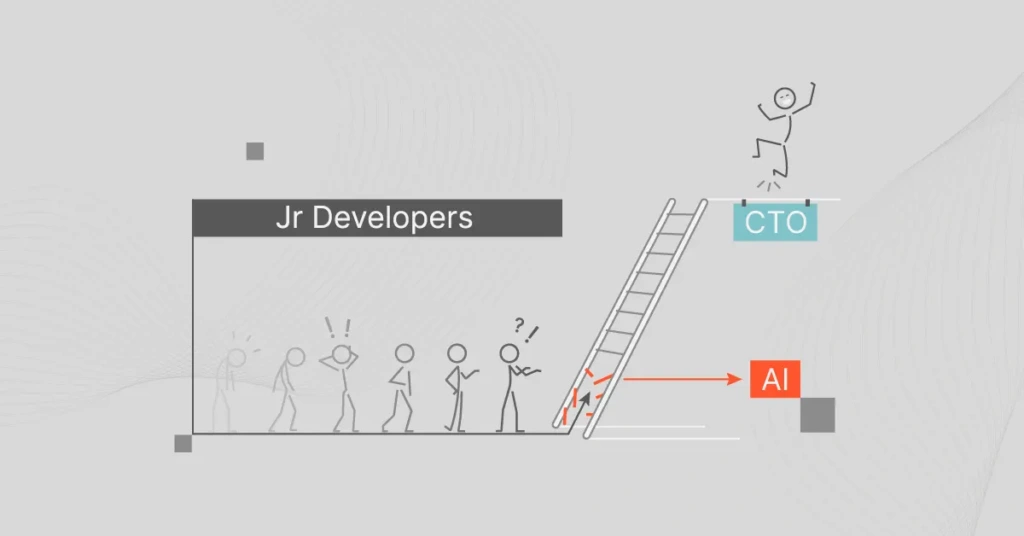As AI adoption increases, the race to real, durable AI value intensifies. Almost every organization that can use AI is using AI — but one of the most troubling trends I’ve observed revolves around talent.
Right now, most organizations use AI to increase internal efficiencies — do quick research, write quick emails, start a new project at the 50% mark rather than the 0% mark, etc.
But some executives I’ve talked to are taking a more aggressive approach. In an effort to shave budgets, they’re slowing down, or worse, eliminating hiring for junior roles, using the justification that existing employees can make up the productivity gap with AI.
Equipping employees with AI is a great idea that I fully support — indeed, AI should be used to improve the productivity of all levels. But using AI at the expense of hiring for junior roles is what will kill our talent pipeline.
To illustrate why, let me briefly introduce you to Brady Lenahan, CloudZero’s VP of sales. Brady has been with CloudZero for six years (twice as long as my tenure) and critical to our growth. He presents as powerful a combination of eloquence and technical expertise as I’ve seen in any sales leader.
How did Brady get to the VP level? How did he develop such strong communication skills, even when talking about very niche technical subjects? How did he learn to comport himself with prospects at every stage of the sales funnel?
Brady graduated from Colby College in 2012 and started work as a business development representative (BDR) at Turbonomic (acquired by IBM in 2021 for $1.5B). As anyone in tech sales knows, the BDR role is the first rung of the sales ladder, the primary responsibility of which is to book meetings for account executives (AEs) and build pipeline for the company. It’s the ultimate junior, starting-in-the-trenches-type role.
The BDR role is also one that has been most heavily impacted by AI. According to 6sense’s State of the BDR 2025 Research Report, 70% of BDRs actively using AI say it makes them more productive, and a majority are using AI for email writing. The BDR role involves a great deal of brute force work: researching accounts, cold outreach (via phone, email, and/or LinkedIn), following up on inbound leads, engaging with prospects who attend events, qualifying new prospects, and more of the like. In other words, a lot of tasks that are ripe for automation — my BDRs (or ADRs, as we call them), who are heavy users of AI, will tell you as much.
Brady spent 11 months as a BDR before being promoted to an AE, and then quickly advanced to director-level roles at Turbonomic and CloudZero. Now, as a VP, he’s in charge of a commercial sales team, enterprise sales teams, and is a champion of ADR development.
Brady Lenahan is a kickass VP precisely because he has occupied all these more junior sales roles in his career. He was on the front lines, connecting with prospects and building pipeline. He was in the AE chair, architecting customer relationships with businesses of all sizes.
The same could be said of our senior software engineers, our people leaders, and any number of CloudZero employees at senior levels in their organizations. You become an expert by understanding the nuts and bolts of a role, seeing the ingredients that lead to success or failure, experiencing both, and developing leadership axioms.
Employees in all roles at all levels will be made more productive with AI (I use AI every day). Companies should seek ways to make all employees more productive with AI. But a company that automates away junior roles mortgages its future, extinguishing its talent pipeline for some short-term budgetary wins.







